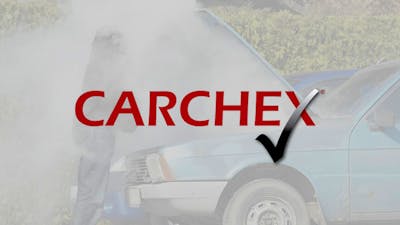Five Things to Check Before Leaving the Mechanic
Taking your vehicle in for routine service appointments should be a worry-free experience. However, as our Car Talk Community conversations prove, many drivers have problems when even the most mundane service is performed. Knowing that we are all human and mistakes can be made, here is a quick rundown of things a vehicle owner can do to protect themselves from a possible maintenance mishap.
Popular Warranty Providers
Always Check Your Oil After An Oil Change
When you bring your vehicle in for an oil change, it seems obvious that putting new oil back in the vehicle would be a step never missed by any mechanic or technician. However, if you type “Mechanic forgot to put oil back” into your Google browser, you will find over 6 million results.
One typical Car Talk Community post on this subject was posted by P. Nelson, who wrote,
“My future son-in-law took his 2007 Nissan 350Z to the dealer for an oil change. When he got home, it was making a strange noise. He checked the oil, and there was none on the dipstick.”
Another post by J. Gruesome following an oil change reads,
“...it started making weird click noises and sounded like it didn’t have oil … when they checked my car, they said I had absolutely no oil whatsoever.”
It only takes a moment to pop your hood and pull the dipstick to see if the vehicle has oil. While you have the hood open, you can also look to see that the oil cap is on and that the oil filter looks new (if visible).
You will want to do these things before you start the engine, of course. If anything seems out of place, politely ask about the issue. Any mechanic would be happy to help prevent a problem like this.
If you have just had your oil changed and skipped this step and your Low Oil warning lamp illuminates, pull over as soon as you safely can and shut off the engine. You may prevent a catastrophic failure by doing so. Call roadside assistance for help.
Do You Have All Your Nuts?
Having a good set of tires is an important investment in your safety and in the health of your vehicle. Rotating tires is a task performed at most service visits. And putting lug nuts back on after this task is complete is the last step in this simple-to-perform activity. However, as crazy as it sounds, lug nuts do get left off. Steve G. posted in the Car Talk Community that after leaving a shop, he heard a sort of knocking sound at low speeds. Steve G. says,
“I checked right away, and sure enough, two lug nuts missing on the right front wheel!”
This is a mishap your author has had on his own vehicle. A very experienced, very caring mechanic simply forgot to put the lug nuts back on a wheel. They were actually there but just hand-tightened waiting to be torqued down. The wheel was visibly off by a few degrees. We had the lugs tightened, and the car has been fine since. A quick inspection might have revealed this issue before we left the shop.
Check Your Directional Tires Are Mounted Properly
If your car has directional tires, be sure to look at them to confirm they are mounted the proper way. Many aftermarket tires are directional, and they need to be mounted in the proper orientation.
The most recent service mishap your author had was at a name-brand dealership near our fair city of Boston. We’ve had only good luck at this dealership in the past, and they even drive us to our local worksite when we put the car in for service.
We mounted some new Michelin CrossClimate2 tires to our personal vehicle, which are directional. This means the tread is designed to always point one way on the car. To avoid any confusion, the tires have an arrow with “Rotation” stamped on the sidewall. When the mechanic rotated the tires, he did so side to side. This put the tires on backward. Directional tires can only be “rotated” front to back. This one we did catch in the lot, and it only cost us 20 extra minutes of wait time while the very embarrassed mechanic corrected his mistake.
Is Your Registration Where You Left It?
In many states, including Car Talk’s home state of Massachusetts, an annual state safety inspection is required. When the inspection is performed, step one is for the mechanic to look at the vehicle’s registration to ensure it is stamped valid and not yet expired. The vehicle identification number (VIN) is also on the registration, and one way for the mechanic to get that info is from that very special piece of paper.
It is easy for a registration to be removed from the car during an inspection. Before you drive home, ensure you have it back and place it wherever you keep it in your vehicle. Routine traffic stops are no fun if you don’t have your “License and registration” handy when the officer or trooper requests it.
Is Your Maintenance Reminder Reset?
Nearly every modern vehicle has a maintenance reminder built into the trip odometer or infotainment screen. Some are simple mileage counters, but others are very detailed and can track your vehicle’s usage using an algorithm. They can even be programmed to alert you to a variety of maintenance events like battery and brake inspections.
Nothing is more frustrating than having that dashboard light appear the day after you have the car into the shop. Whenever you take your car to a dealer for anything, ask that the maintenance reminder be checked and reset and take a good look at your dash before you head out of the lot.
The First Thing To Do When You Return Home After Any Service Visit
That service visit you just completed is valuable. Not only does it keep your ride in top shape, but it also ensures that your warranty remains valid. If you sell your car at some point, the new owner may wish to see the receipts of your many maintenance visits before completing a deal.
Have a folder in which you place all of your maintenance receipts. If your “file” is inside your glove box under a Big Mack box, so be it. Keep every receipt, using whatever level of organization is your cup of tea. But keep them. If you have a warranty issue, it can be very helpful to show the work has been performed and any savvy used car shopper will want to see that the car they are considering has been properly maintained.
Read more on the topic of Owning a Car here.













